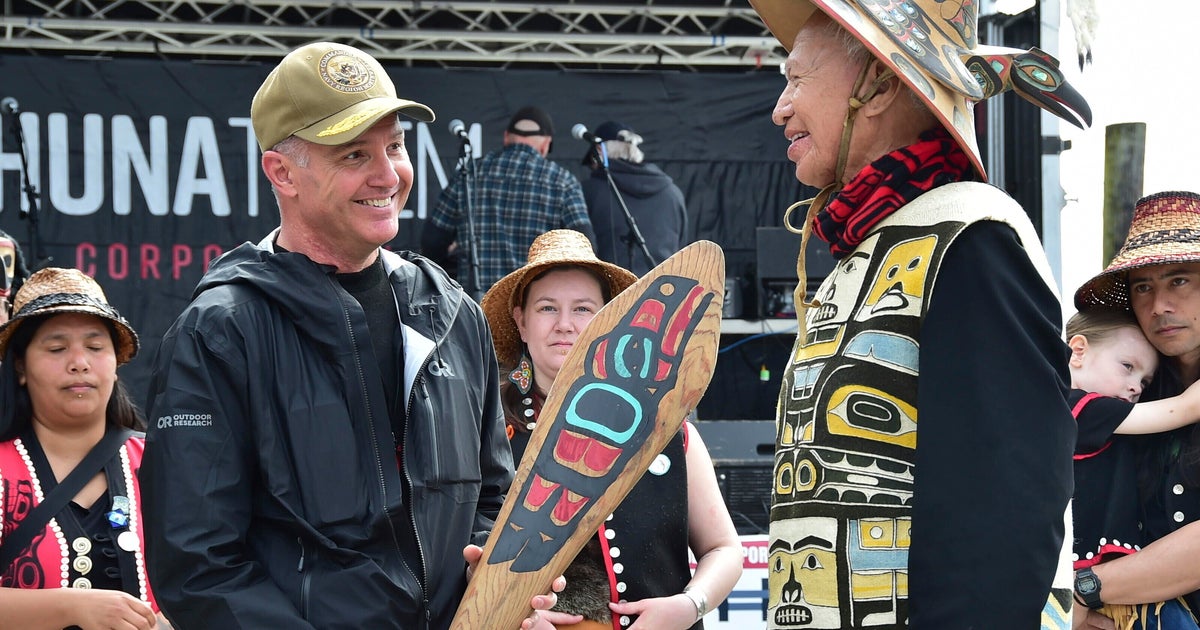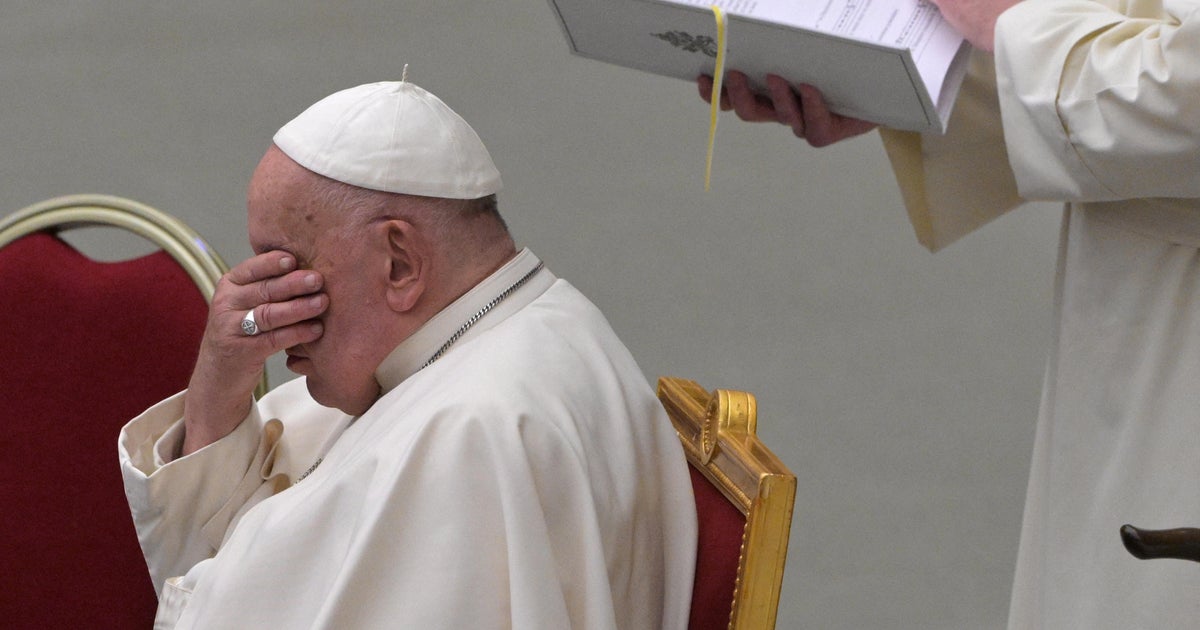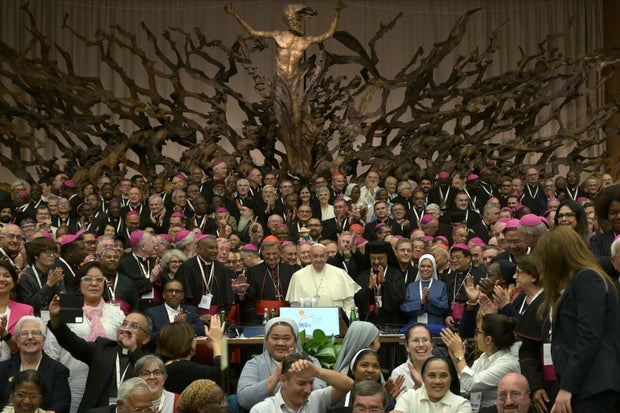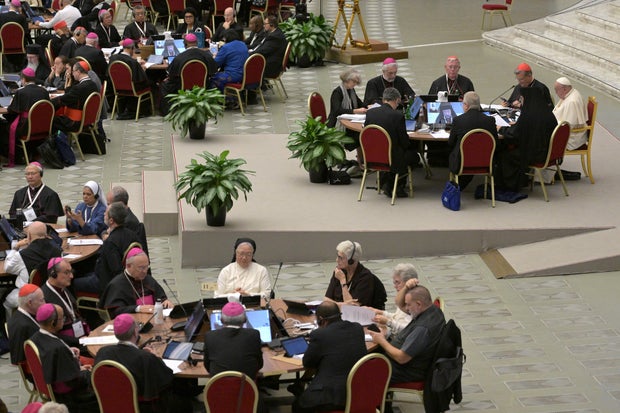CBS News
Is a variable student loan rate worth it?

Getty Images
For many people, taking out student loans is a necessary part of getting the education they need to succeed in life. Whether it’s for undergraduate studies or a specialized graduate degree, borrowing money to pay for education is a big decision – and there are options to consider. For instance, you’ll have to decide whether or not to get a loan with a fixed rate or a variable rate.
A fixed-rate loan will charge the same interest rate for the whole time you are paying the loan back. A variable-rate loan, on the other hand, will see the interest rate change at set times based on the current rates offered by the lender.
Trying to figure out how to fund your education? Start comparing student loans today.
Is a variable student loan rate worth it?
There are a few questions you should ask yourself when deciding whether or not a variable student loan is a good idea for your situation. Here are some of the things to consider.
What do rates look like right now?
If the rate you are being offered is on the low side, getting a variable-rate loan doesn’t make sense. The rate could very well end up going up, leaving you with more interest to pay. If the rate is higher than you’d like, though, a variable-rate loan could be a very good idea, as the rate might go down in the future, saving you money.
Right now, student loan rates – and all interest rates at commercial lenders – are higher than usual. This is because the Federal Reserve has raised the federal funds rate repeatedly over the past 18 months, all to fight inflation. While the federal funds rate does not directly impact the rate your student loan lender will offer you, interest rates for consumer lending products tend to go up and down at pace with the rates set by the Fed.
For this reason, a variable-rate loan could be a good idea right now. While the Fed has indicated it could raise interest rates again to continue the inflation fight, more than likely the rate will have gone down by the time you are paying off your loans after you finish your education.
Here’s an example. At lender Sallie Mae, the current rates for a fixed-rate undergraduate loan are between 4.50% and 15.49%. For simplicity, let’s use 10%. If you borrow $10,000 at a 10% fixed interest rate and a 10-year term, you’ll end up paying $132.15 per month and a total of $5,858.09 in interest, according to Bankrate’s student loan calculator.
Sallie Mae’s variable-rate undergraduate options currently run between 6.37% and 16.70%. While we can’t say exactly how much you’ll pay if you take out a variable-rate loan — the rate could change many times, after all — let’s do two calculations: one where your rate averages 8% and one where it averages 12%. With an average of 8%, you’d pay a total of $4,559.31 in interest. If the rate averaged 12%, on the other hand, your total interest payments would be $7,216.51. Choosing a variable-rate loan could save or cost you thousands of dollars — all depending on what happens with the broader interest rate market. And remember, the figures cited from Sallie Mae also include an auto debit discount and they’re only available for qualified borrowers. So these figures may be higher or lower for you depending on your personal profile.
Start shopping for student loans online today.
Do you value consistency or thrift?
The big advantage of a fixed-rate student loan is that your monthly payments will always be the same. No matter what happens, you’ll owe the same amount each month, so you can budget around that and make plans for the future.
With a variable-rate loan, on the other hand, your monthly payments will change on a set schedule – perhaps monthly or quarterly – based on the current rates offered by your lender. While this could save you money if rates go down, your monthly payments could change dramatically throughout your loan. This could make budgeting and planning difficult as you’ll never know what you might owe from month to month.
Are you a risk taker?
Finally, it’s important to keep in mind that variable-rate loans are risky. While you could certainly end up paying less, it’s also possible that if rates go up you’ll end up paying more than you would with a fixed rate. When deciding which type of loan to get, ask yourself whether you want to take a risk or make a safer – but possibly more expensive – choice.
The bottom line
When borrowing money to pay for education, the most important choice you make might be whether to get a fixed or variable rate. A fixed-rate loan is safe and predictable, while a variable-rate loan could save you money. There is a chance, though, that it will cost you more – and the changing monthly payments make budgeting and planning more difficult.
CBS News
Navy issues apology for destroying Alaska Native village in 1882

Shells fell on the Alaska Native village as winter approached, and then sailors landed and burned what was left of homes, food caches and canoes. Conditions grew so dire in the following months that elders sacrificed their own lives to spare food for surviving children.
It was Oct. 26, 1882, in Angoon, a Tlingit village of about 420 people in the southeastern Alaska panhandle. Now, 142 years later, the perpetrator of the bombardment — the U.S. Navy —has apologized.
Rear Adm. Mark Sucato, the commander of the Navy’s northwest region, issued the apology during an at-times emotional ceremony Saturday, the anniversary of the atrocity.
“The Navy recognizes the pain and suffering inflicted upon the Tlingit people, and we acknowledge these wrongful actions resulted in the loss of life, the loss of resources, the loss of culture, and created and inflicted intergenerational trauma on these clans,” he said during the ceremony, which was livestreamed from Angoon. “The Navy takes the significance of this action very, very seriously and knows an apology is long overdue.”
While the rebuilt Angoon received $90,000 in a settlement with the Department of Interior in 1973, village leaders have for decades sought an apology as well, beginning each yearly remembrance by asking three times, “Is there anyone here from the Navy to apologize?”
“You can imagine the generations of people that have died since 1882 that have wondered what had happened, why it happened, and wanted an apology of some sort, because in our minds, we didn’t do anything wrong,” said Daniel Johnson Jr., a tribal head in Angoon.
The attack was one of a series of conflicts between the American military and Alaska Natives in the years after the U.S. bought the territory from Russia in 1867. The U.S. Navy issued an apology last month for destroying the nearby village of Kake in 1869, and the Army has indicated that it plans to apologize for shelling Wrangell, also in southeast Alaska, that year, though no date has been set.
Chief Mass Communication Spc. Gretchen Albrecht/U.S. Navy via AP
The Navy acknowledges the actions it undertook or ordered in Angoon and Kake caused deaths, a loss of resources and multigenerational trauma, Navy civilian spokesperson Julianne Leinenveber said in an email prior to the event.
“An apology is not only warranted, but long overdue,” she said.
Today, Angoon remains a quaint village of about 420 people, with colorful old homes and totem poles clustered on the west side of Admiralty Island, accessible by ferry or float plane, in the Tongass National Forest, the nation’s largest. The residents are vastly outnumbered by brown bears, and the village in recent years has strived to foster its ecotourism industry. Bald eagles and humpback whales abound, and the salmon and halibut fishing is excellent.
Accounts vary as to what prompted its destruction, but they generally begin with the accidental death of a Tlingit shaman, Tith Klane. Klane was killed when a harpoon gun exploded on a whaling ship owned by his employer, the North West Trading Co.
The Navy’s version says tribal members forced the vessel to shore, possibly took hostages and, in accordance with their customs, demanded 200 blankets in compensation.
The company declined to provide the blankets and ordered the Tlingits to return to work. Instead, in sorrow, they painted their faces with coal tar and tallow — something the company’s employees took as a precursor to an insurrection. The company’s superintendent then sought help from Naval Cmdr. E.C. Merriman, the top U.S. official in Alaska, saying a Tlingit uprising threatened the lives and property of White residents.
The Tlingit version contends the boat’s crew, which included Tlingit members, likely remained with the vessel out of respect, planning to attend the funeral, and that no hostages were taken. Johnson said the tribe never would have demanded compensation so soon after the death.
Merriman arrived on Oct. 25 and insisted the tribe provide 400 blankets by noon the next day as punishment for disobedience. When the Tlingits turned over just 81, Merriman attacked, destroying 12 clan houses, smaller homes, canoes and the village’s food stores.
Six children died in the attack, and “there’s untold numbers of elderly and infants who died that winter of both cold, exposure and hunger,” Johnson said.
Billy Jones, Tith Klane’s nephew, was 13 when Angoon was destroyed. Around 1950, he recorded two interviews, and his account was later included in a booklet prepared for the 100th anniversary of the bombing in 1982.
“They left us homeless on the beach,” Jones said.
Rosita Worl, the president of Sealaska Heritage Institute in Juneau, described how some elders that winter “walked into the forest” — meaning they died, sacrificing themselves so the younger people would have more food.
Even though the Navy’s written history conflicts with the Tlingit oral tradition, the Navy defers to the tribe’s account “out of respect for the long-lasting impacts these tragic incidents had on the affected clans,” said Leinenveber, the Navy spokesperson.
Tlingit leaders were so stunned when Navy officials told them, during a Zoom call in May, that the apology would finally be forthcoming that no one spoke for five minutes, Johnson said.
Eunice James, of Juneau, a descendant of Tith Klane, said she hopes the apology helps her family and the entire community heal. She expects his presence at the ceremony.
“Not only his spirit will be there, but the spirit of many of our ancestors, because we’ve lost so many,” she said.
CBS News
Pope Francis’ Catholic church reform process ends without giving more equity to women

Pope Francis’ yearslong process to reform the Catholic Church closed Saturday with recommendations that fell short of giving women more equity as hoped but reflected the pope’s aims for a church that at least listens more to its followers.
In a significant move, the pope said he would not issue a teaching document from the recommendations, which called for women to be allowed all opportunities that Church law already provides while leaving open the contentious question of allowing women to be ordained as deacons.
As a result, it remains unclear what if any authority or impact the synod’s final recommendations will have, given the purpose of the exercise was to provide the pope with specific proposals on reform.
“In this time of war, we must be witnesses to peace” and give an example of living with differences, the pope said in explaining his decision.
TIZIANA FABI/AFP via Getty Images
Francis said he would continue to listen to the bishops’ counsel, adding “this is not a classic way of endlessly delaying decisions.”
Deacons perform many of the same functions as priests, such as presiding over baptisms, weddings and funerals, but they cannot celebrate Mass. Advocates say allowing women to be deacons would help offset the shortage of priests. Opponents say it would signal the start of a slippery slope toward ordaining women to the all-male priesthood that Francis has repeatedly reaffirmed.
Earlier this week, the Vatican’s top doctrinal officer, Cardinal Victor Manuel Fernandez, told the extraordinary assembly of 368 bishops and laypeople that Francis had said the moment “is not ripe” for allowing the ordination of women as deacons. He did not respond directly to a request to define what would determine “ripeness” for a greater role for women.
The multi-year synod process had sparked great hopes for change, especially for women, who have long complained that they are treated as second-class citizens in the church. Women are barred from the church’s highest ministerial positions, yet do the lion’s share of the work running Catholic hospitals and schools and passing the faith onto future generations.
Speaking to the synod on Thursday, Fernandez explained that a special working group would continue beyond the closing of the meeting, but that its focus would be on discussing the role of women in the church — not in the diaconate, or the office of deacon. He added that while working with women in previous pastoral roles, “most did not ask for or want the diaconate, which would be cumbersome for their lay work.”
The meeting asked for “full implementation of all the opportunities already provided for in Canon Law with regard to the role of women, particularly in those places where they remain under-explored.” It leaves open “the question of women’s access to diaconal ministry.”
TIZIANA FABI/AFP via Getty Images
It was the most contested paragraph of the final document, with 258 votes for and 97 against. It was not clear if the “no” votes were because the language went too far or not far enough.
The outcome is a disappointment for Catholics who have been campaigning for recognition that women share a spiritual calling that is no different than a man’s. They also noted that despite the inclusion of women in the synodal process, the working group that is guiding discussions on women’s role is being run by the Roman curia, operating outside the synod.
“I think the final document will be received with much disappointment and frustration by many women around the world who are hoping for concrete changes,” said Kate McElwee, the executive director of the Women’s Ordination Conference.
While she acknowledged a “cultural shift,” she said “the pace of that shift is perhaps too slow for many women.”
The first phase of the synod process ended last year by concluding it was “urgent” to guarantee fuller participation by women in church governance positions, and calling for theological and pastoral research to continue about allowing women to be deacons.
If before the synod the idea of allowing women to be deacons was a fringe proposal pushed by Western progressives, the idea gained attention during the debate. It became something of a litmus test of how far the church was going to go, or not, to address demands of women for greater equality and representation in the church’s highest ranks.
Francis, had other ideas, insisting that ordaining women would just “clericalize” them and that there were plenty of other ways to empower women in the church, even leading Catholic communities, without resorting to ordination.
CBS News
Jim Donovan, Cleveland Browns play-by-play announcer and TV sports anchor, dies of cancer at 68

Jim Donovan, the beloved radio play-by-play announcer for the Cleveland Browns and a TV sports fixture for more than four decades, died Saturday. He was 68.
Donovan retired from his broadcast career earlier this year and stepped away from his game-day duties with the team before this season while battling cancer. Donovan announced his retirement from WKYC on May 30 and worked his final broadcast as a sports anchor on June 10. He had called Cleveland’s games since the team’s expansion rebirth in 1999.
David Richard / AP
“This is an incredibly difficult day for us and the entire Cleveland Browns organization,” Browns owners Dee and Jimmy Haslam said in a statement. “His impact as the Voice of the Browns for 25 years is immeasurable as he touched the lives of our fans each and every Sunday with his love for the Browns and his brilliance at his craft.
“He will be greatly missed, but he cemented a legacy that will live on forever. The only thing that outweighed his love for this city and this team was the love he had for his family. Our thoughts and prayers are with his wife, Cheryl, his daughter, Meghan, and everyone who was fortunate enough to call Jimmy family or friend.”
A Boston native known to everyone as “Jimmy,” Donovan endeared himself to Cleveland fans with his passion, sense of humor and professionalism. He was a stickler for detail, spending countless hours preparing for game broadcasts.
Donovan had recently been inducted into the Browns’ Legends Club and the Greater Cleveland Sports Hall of Fame. He had been too ill to attend the events.
When he was forced to step down in August, Donovan wrote a letter to Browns fans expressing his gratitude for their support.
“I have called Browns games for 25 years. Not a day has gone by when I haven’t paused and been so proud to be ‘The Voice of the Browns,'” he wrote. “Cheryl, Meghan and I thank you for all the love, support and prayers during my rough patches. It’s like having a huge family around us. And that’s what makes the Cleveland Browns so special. You do.”
Donovan had to step away as sports director at WKYC-TV last fall for several months to undergo treatment for leukemia. He returned to the broadcast booth in time to call the team’s late-season run to the playoffs.
Donovan was first diagnosed with chronic lymphocytic leukemia, a strain of the disease that starts in white blood cells and affects bone marrow, in 2000. He underwent a bone marrow surgery in 2011.
A graduate of Boston University, Donovan got to Cleveland in 1985. Along with doing local reporting of the city’s three professional sports franchises, Donovan also had several national network assignments and was part of NBC’s coverage team at the 1992 and 1996 Summer Olympics.








